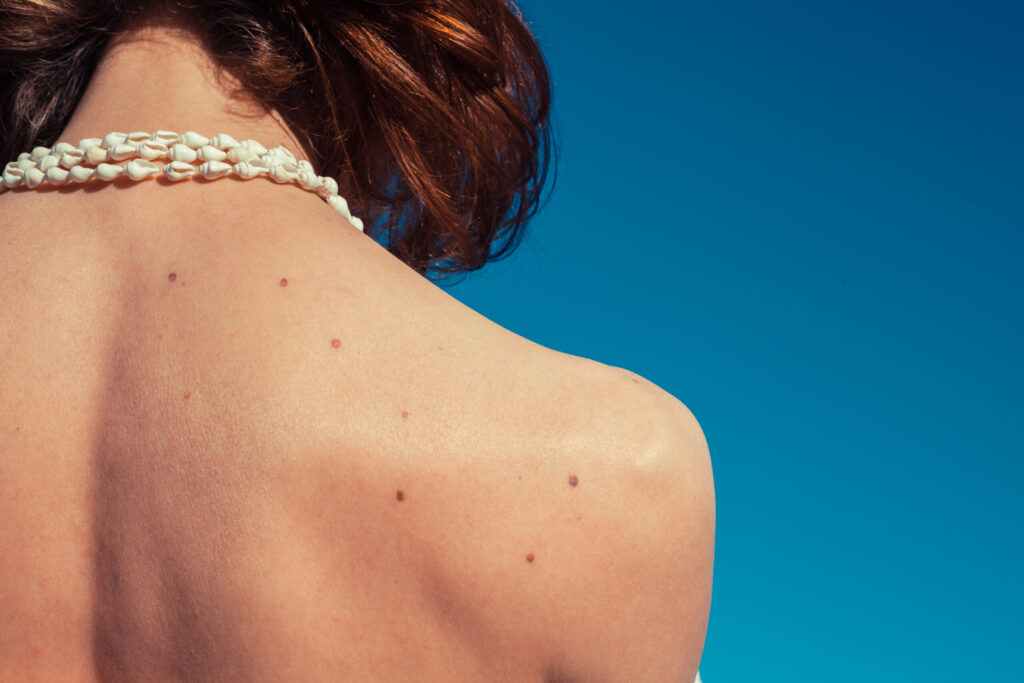Watson Clinic Dermatologist Talks Trends and Tackles Myths
by REBEKAH PIERCE
According to the Skin Cancer Foundation, skin cancer is the most common cancer in the United States. However, it is also one of the most misunderstood. Often seen as a more benign cancer, the reality is that it can be incredibly deadly, with two people dying of skin cancer in this country every single hour.

The good news is that when skin cancer is detected early, it’s often treatable. The five-year survival rate for localized melanoma is 99 percent. It’s also not likely to come back after treatment. In fact, Watson Clinic dermatologist Dr. Linwood Bond says that in his practice, recurrence rates are less than 1 percent.
Nevertheless, understanding the disease is key to prevention and treatment. While skin cancer cases may be on the rise, increased research and a focus on public health education mean that it is more preventable and treatable than ever before.
Pinpointing the Trends
Risk factors for developing skin cancer haven’t changed much over the years, nor have the most effective treatments — which remain surgical excision of smaller cancers and radiation therapy for more aggressive ones.
“Generally, the trends are pretty consistent,” Bond says. “Someone that’s more exposed to the sun, the fairer the skin, the more skin cancer they’ll tend to grow.”
Although Bond admits he doesn’t see as many people using tanning beds as he did 20 years ago, “whether or not the use has increased or decreased, I’m not sure.” His anecdotal observations are indeed backed up by fact. According to the American Academy of Dermatology, tanning practices (such as the use of indoor tanning beds) have decreased in recent years. The prevalence of tanning among American adults was cut roughly in half between 2007 and 2018 alone.
Despite this, one trend Bond says he has seen more of in the past few years is more aggressive skin cancers that grow faster. He says although it’s challenging to pinpoint the direct cause for this increase, almost all occur in people who are older than 50.
The Spread of Misinformation
An Orlando Health Cancer Institute survey conducted last year showed that young adults are likely to believe myths and misinformation that may discourage proven methods of skin cancer protection. For instance: 14 percent of adults younger than 35 think daily sunscreen use is more harmful to the skin than direct skin exposure, and 23 percent believe drinking water and staying hydrated prevent sunburn.
Some myths are perpetuated on social media, placing younger generations at risk.
Among these is the myth that sunscreen use robs the body of essential vitamin D, and therefore, should be avoided.
“As a rule, yes, someone that’s fair-skinned typically only needs about five minutes of sun exposure to obtain the maximum amount of vitamin D their body will produce. Many times, that’s not sufficient and they’ll still need supplementation,” Bond explains, adding that more isn’t always better and more sun exposure “doesn’t necessarily increase” the amount of vitamin D your skin will produce.
Then there’s the prevalent myth that sunscreen causes cancer. “Anything you put on your skin will be absorbed to a degree,” Bond says. “The risk appears to be minimal. We don’t fully know all the effects of sunscreens, but generally, it’s considered safer to use sunscreen than to not use sunscreen.”
Evaluating Risks
The devil you know, versus the one you don’t? Not exactly. Bond explains that UV light ranks as a class 1 carcinogen, meaning it is very likely to cause cancer with excessive exposure. Sunscreens, on the other hand, haven’t shown to have many — if any — long-term effects.
“We don’t know everything about every ingredient, but the [overall] absorption would be relatively small. It’s a minimal risk, but it’s currently unknown, and much less so than exposure to UV light from the sun.”
“I haven’t read where it particularly causes cancer, but have read in areas where it might affect certain aspects of the body,” he clarifies, noting hormonal components in particular. Despite this, he emphasizes that UV rays are significantly more dangerous than the small risk of some sunscreen being absorbed by the body.
So, what can someone concerned about this do to protect themselves? “I generally recommend wearing sun protective clothing over what can be covered,” Bond advises. “Whatever can’t be covered, apply sunscreen there. That way, it minimizes the exposure to sunscreen.”
Of course, going out into the sun during the midday hours presents the biggest risk.
“This is something to try to avoid if possible.”
Treat Small and Early
Beyond debunking these myths and educating his patients on prevention, Bond says that early diagnosis and treatment likely play the biggest role in the fight against skin cancer.
“If you see any new spot that’s growing or changing, go and have it evaluated sooner rather than later,” he says.
“Skin cancer is less dangerous when it’s small. It’s more dangerous the longer you wait. It’s not going away. By delaying it, it’s only getting bigger and worse. It’s always better to treat small and early.”
